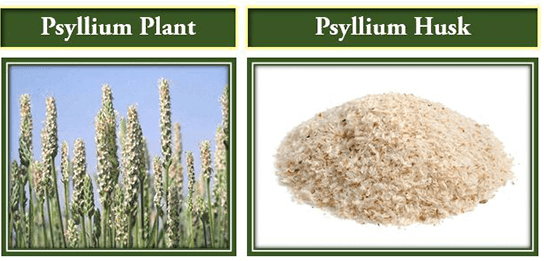
Classification
Name: Plantago Ovata
Family: Plantaginaceae
Synonyms
English: Psyllium, (it is actually a common name of many members of the Plantago genus whose seeds produce mucilage and are primarily used for the same), Spogel Seeds.
Hindi: Isabgol
Sanskrit: Ashvakarna, Ishadgola, Ashvakarna Beeja (Seeds resemble the shape of horse’s ear), Sheeta Beeja (seeds have cooling effect in the body), Ishwarbola.
Physical Features
It is an annual, hairy stalk less shrub.
Flower Stalk is ovate or cylindrical, spherical or pointed with numerous flowering shoots.
Fruits – Ovoid, 8mm long, spherical, upper half part is in the form of a lid
Seed Shell – It is bifurcated and contains one seed in each compartment,
Seeds – Boat shaped, seed coats are white in color while the fleshy part is red in color because of which the seeds have a pinkish hue. After dipping in water the seeds swell up and become fragrant.
Place of Origin
Isabgol plant is a native of West Asia but is extensively grown in India for commercial use. The husk of the seeds is the main part of the plant that is used medicinally. About 26-27% of the husk can be obtained from the seeds. It always grows in sunny, clear weather before the time of harvest.
Chemical Composition
Seeds contain 30% mucilage AND albumin which is present in the husk. This mucilage is composed of xylose, arabinose, galacturonic acid etc.
Acubin – A stable oil is found in seeds with activity similar to tannins and acetylcholine. The fleshy part of the seeds contains 14.7% linoleic acid containing oil which can help in reducing blood cholesterol levels found in the seeds that 1 part of the seed contains 20 parts water and it gets converted into jelly on keeping.
Other Varieties
Seeds of Isabgol are often mixed with other varieties such as P.Lanceolata, P.arenaria, and Salvia Aegyptica. All of these also have highly mucilaginous seeds.
Bioenergetics
Rasa: Madhura (sweet)
Guna: snigdha (smooth), guru (heavy), pichchil (mucilagenous)
Virya: Sheeta (cold)
Vipaka: Madhura (sweet)
Tridosha: Vata-pitta shamaka
Parts Used: Seeds and seed husk.
How to use Isabgola Seeds and Husk
- Soak Isabgol seeds in a cup of water, shake well and swallow.
- Seeds and husk can also be soaked in water and left for 2-3 hours, thereafter it can be eaten along with sugar as a mixture.
- 2 tsf almond oil mixed with 2 gm husk of Isabgol mixed with warm milk works well in stubborn constipation.
Side Effects of Over use of Psyllium
- Excessive use can lead to hampered digestive power of the body as it is in itself very hard to digest and is also not absorbed by the small intestine due to its very high fiber content.
- As Isabgol husk imbibes water it can choke throat and lead to serious consequences hence, it should be used with caution.
- Cases of hypersensitivity to Isabgol have also been documented.
- Isabgol intake should be accompanied by intake of ample fluids and water otherwise it may lead to intestinal obstruction.
- In patients of arthritis and other joint pains Isabgol intake may aggravate the pain due to its cool potency.
- Some studies suggest that Isabgol is harmful for the hips and nerves. In post natal care also it should be used with caution by the mothers.
To buy Isabgol (Psyllium Husk) Powder, please visit store.planetayurveda.com/products/isabgol-husk-powder
